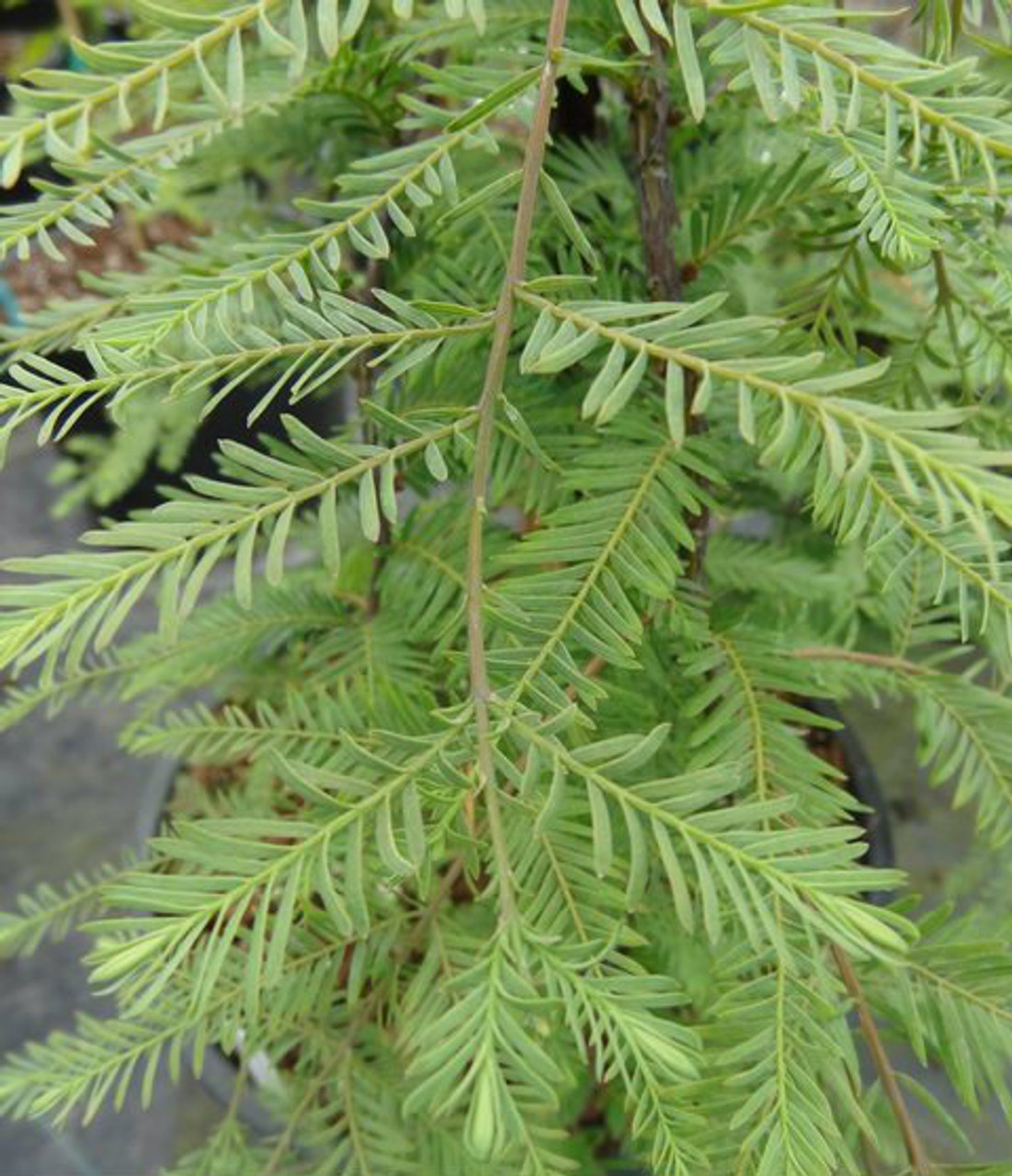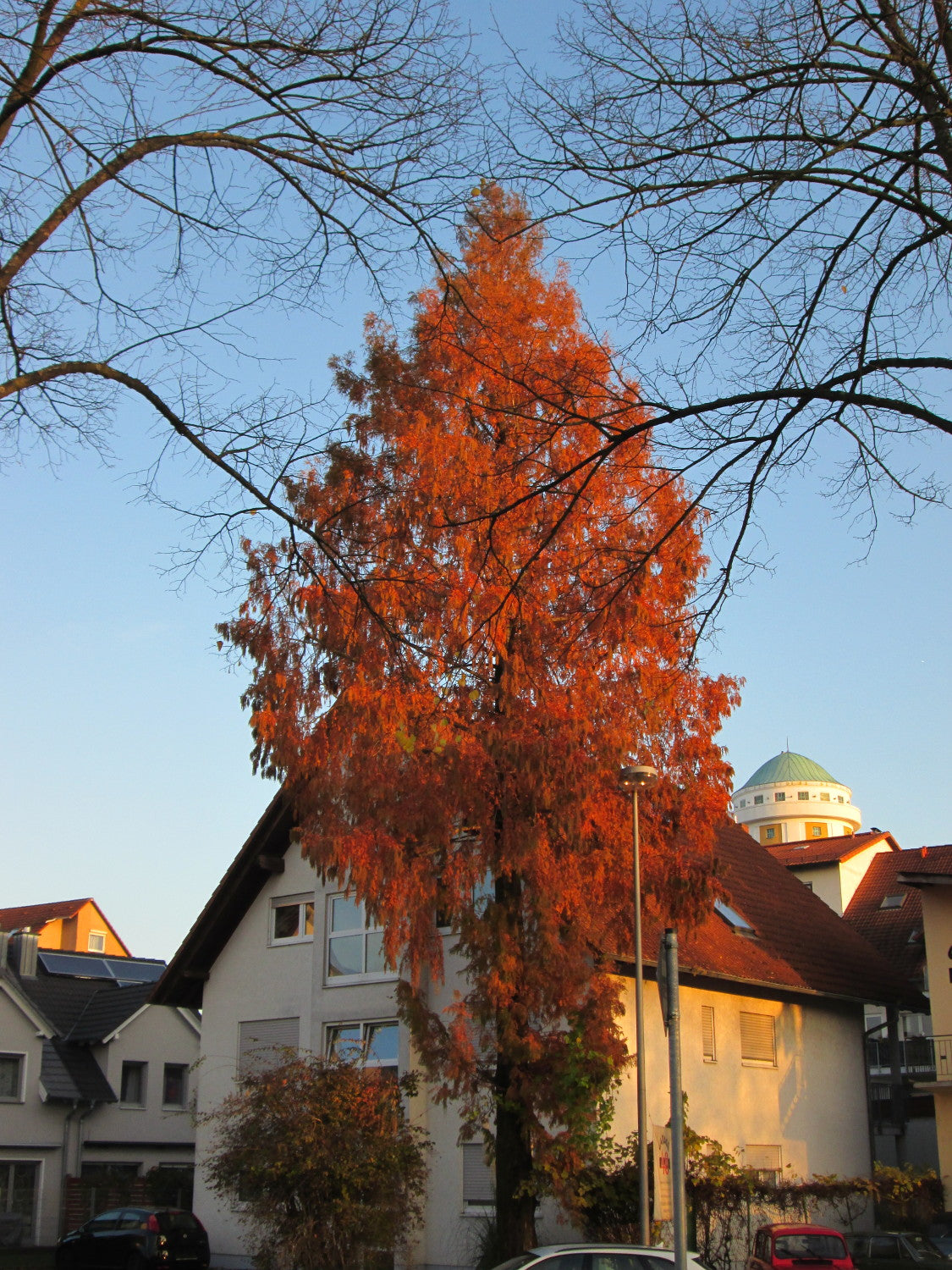

Organic weed killers usually do not kill roots. Weed killer is very effective, however it is harmful to the environment.Be careful not to allow the woodchip to touch the stem as it can cause rot. After clearing the ground around the tree, firmly fit the mat by tucking the edges into the soil and put a thick layer of bark mulch on top of this. Mulch mats are an effective way to stop grass and weeds, although they will require a careful eye to make sure they continue to work.
#Metasequoia dawn redwood free
It is vital that for at least 3 years after planting your tree or hedge has a circle or strip one metre wide completely free of grass. When trees are first establishing, the grass roots would be at the same level as the tree roots and are far more efficient at taking up water and thus choke the tree.

One of the most common causes of lack of water is competition from grass. In hot dry spells give the equivalent of 2 bucketfuls every three days. It is essential throughout the spring and summer, to give a heavy enough watering to enable the water to penetrate right down to the deepest root level of the tree. The main reason that plants die within 12 months of having been planted is lack of water. The largest specimen in the UK currently 25m (80ft) tall.įor the continued healthy growth of your trees, shrubs or hedging it is vital that you follow the advice below. It is now widespread in parks and gardens throughout the world. In 1948 the Arnold Arboretum of Harvard University sent an expedition to collect seeds and, soon after, seedling trees were distributed to various universities and arboreta worldwide for growth trials. The genus Metasequoia was first described as a fossil from the Mesozoic 65 to 200 million years ago, however in 1943 a small stand of an unidentified tree was discovered in China in Lichuan County, Hubei these were not studied further until 1946 and only finally described as a new living species, Metasequia glyptostroboides in 1948. The Dawn Redwood is in some ways a botanical oddity as it is the only living member of it genus. In this respect it is also similar to Swamp Cypress (Taxodium distichum) with which it also shares a liking for wet even boggy ground.ĭawn Redwood will grow in most situations, it will grow best in deep loamy moist soils, it does not like dry soils but will cope well with waterlogging even to the extent of growing in standing water. However, this mistake should only be made in the summer for unlike its redwood cousin, the Sequoia, Metasquoia is a deciduous conifer whose needles turn a reddish-brown before falling off in the autumn.


The leaves which are short, broad needles, could be mistaken for those of the Yew. The Dawn Redwood has the familiar conical coniferous shape, with sparse upward sweeping branches giving the tree a narrow form. Planting considerations: Plant early enough in the fall to allow the roots to become established and avoid planting in a low areas prone to frost.METASEQUOIA GLYPTOSTROBOIDES – Dawn Redwood.Soil: While it is found naturally in wet conditions, it can grow in versatile soil conditions and has tolerance to both flood and drought.Cones: ½’’-1” long ovoid cones, similar to a sequoia.Older trees may form buttresses at the base. Bark: Reddish-brown bark that darkens with age.Leaves: Bright green feathery leaves that turn copper in the fall.Canopy: Pyramidal shape, one strong leader.Dimensions: The shortest of the redwoods, it is a fast growing tree that grows to 70’–100′ tall with a 25′ spread.However, the trees were widely distributed during the Mesozoic era and are known today to also be suited for colder climates and dry conditions based on recent research. The forested floodplains and swamps support the trees with their ability to tolerate soggy soils. These same conditions support rice cultivation and the forest type is comparable to the bald cypress forests of the southeastern United States. In its natural habitat in China, the dawn redwood is known as “water fir“or “water pine” because it is found in low-lying areas near rivers and streams. In urban environments, the trees need ample room to grow and are best suited for parks, rain gardens, or college and corporate campuses. Collected and distributed by arboreta across the country, the progeny can now be found on city blocks from New York City to Olympia, WA. Although the dawn redwood is still protected in its natural habitat, the tree has been able to overcome its limited distribution in the river valleys of south-central China with the help of scientists. You no longer have to travel through the mountains of China to see one of the world’s living fossils.


 0 kommentar(er)
0 kommentar(er)
